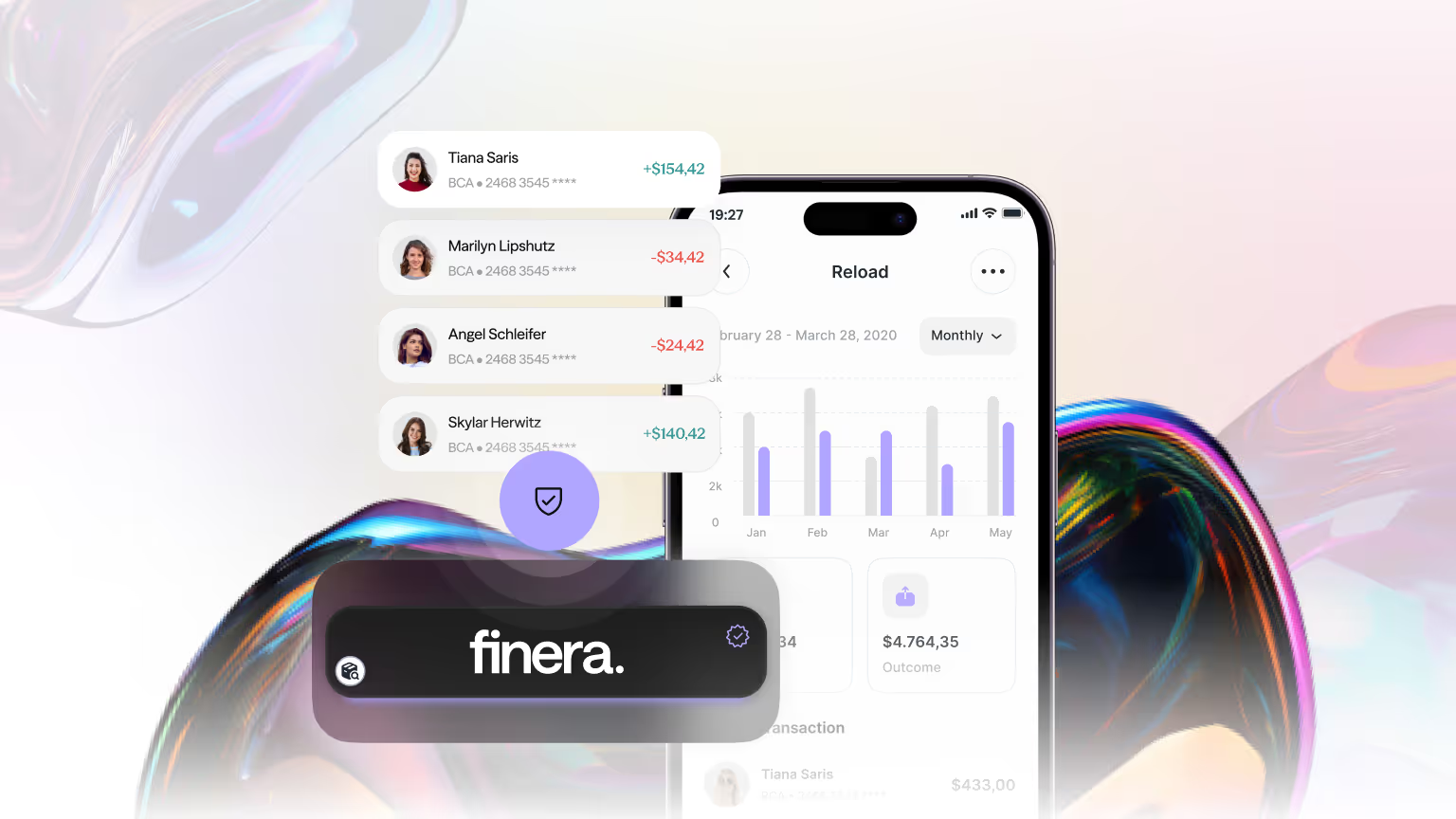What Is 3D Secure (3DS) and How Does It Prevent Online Payment Fraud?
Discover how 3DS protects online payments from fraud while keeping checkout fast and frictionless.

In the digital age, online transactions have become second nature. But as e-commerce grows, so too does the risk of fraud. According to The Paypers, card-not-present (CNP) fraud is projected to account for 73% of all card payment fraud losses by 2024. With businesses losing billions to fraudulent activity each year, how can merchants protect themselves and their customers? One key answer is 3D Secure (3DS).
What is 3D Secure (3DS)?
3D Secure (3DS) is a security protocol developed to enhance the safety of online card payments. Originally introduced by Visa as "Verified by Visa" and later adopted by Mastercard (Mastercard Identity Check), American Express (SafeKey) and others, 3DS is now a global standard in fraud prevention.
The name "3D Secure" refers to the three domains involved in the transaction process:
- Issuer Domain: The cardholder’s bank.
- Acquirer Domain: The merchant's bank or payment processor.
- Interoperability Domain: The infrastructure provided by the card scheme (e.g., Visa, Mastercard).
This multi-domain setup allows for dynamic, real-time authentication of cardholders during online purchases, adding a critical layer of protection against unauthorised transactions.
How Does 3DS Work?
When a customer makes a purchase online using a 3DS-enabled card, the transaction initiates a verification step. This could involve entering a one-time password (OTP), biometric verification via a banking app or another form of two-factor authentication. Once verified, the payment proceeds; if the verification fails or is abandoned, the transaction is declined.
Here's a simplified breakdown:
- The customer enters card details at checkout.
- The merchant's payment gateway contacts the card issuer via the 3DS protocol.
- The issuer prompts the customer for authentication.
- Upon successful authentication, the transaction is approved.
This step confirms the legitimacy of the cardholder, significantly reducing the likelihood of fraud.
From 3DS1 to 3DS2: Evolution of the Protocol
While 3DS1 laid the groundwork for secure online transactions, it had shortcomings. Clunky pop-ups, poor mobile support and high cart abandonment plagued the early version. Recognising this, the payments industry introduced 3DS2.
3DS2 improves the process by:
- Supporting biometric and app-based authentication.
- Enabling frictionless checkout for low-risk transactions.
- Enhancing mobile and in-app payment experiences.
- Providing richer data sets for better fraud decision-making.
In fact, the Payments Journal notes that EMV 3DS (3DS2) enables risk-based authentication, allowing issuers to evaluate transactions in real time. Low-risk purchases can be processed without additional input from the customer, improving conversion rates without compromising security.
How Does 3DS Prevent Online Payment Fraud?
3DS acts as a real-time gatekeeper, verifying the identity of the cardholder at the moment of purchase. This reduces the risk of fraudulent transactions significantly. Implementing 3DS can reduce fraud by up to six times compared to non-3DS transactions.
Here are the key ways 3DS helps prevent online fraud:
- Identity Verification: The primary function of 3DS is to confirm that the person using the card is the legitimate owner. Whether via OTPs, app notifications or biometrics, 3DS adds an identity check that fraudsters struggle to bypass.
- Risk-Based Authentication: With 3DS2, issuers assess risk in real time. Factors like device type, IP address, transaction history and merchant reputation all contribute to a decision on whether to challenge the user.
- Liability Shift: One significant benefit of using 3DS is the shift in liability. If a transaction authenticated via 3DS turns out to be fraudulent, responsibility often shifts from the merchant to the card issuer. This alone makes 3DS a vital tool in a merchant’s fraud prevention strategy.
- Reduced Chargebacks: By catching unauthorised transactions before they go through, 3DS helps reduce costly chargebacks and the associated operational headaches.
Challenges and Considerations
Despite its advantages, 3DS is not without its challenges. Poorly implemented 3DS protocols can lead to a poor customer experience and increased cart abandonment. In fact, Payments Journal reports that in regions where Strong Customer Authentication (SCA) is enforced, abandonment rates exceed 25%, and 37% of consumers have been unable to complete a purchase due to authentication issues.
So, is the security worth the potential loss in sales? It doesn’t have to be a trade-off. By implementing 3DS2 with frictionless flows and intelligent risk-based checks, businesses can maintain high security standards without sacrificing user experience.
Regulatory Compliance and 3DS
The introduction of the EU’s Revised Payment Services Directive (PSD2) brought with it the requirement for Strong Customer Authentication. 3DS2 meets the criteria for SCA, making it an essential component for merchants operating within or targeting the European market.
Failure to comply with PSD2 can result in declined transactions and penalties. Therefore, adopting 3DS2 isn't just a best practice, it's a regulatory necessity in many regions.
Future-Proofing Your Payment Security
As digital commerce continues to evolve, so too must fraud prevention. Artificial intelligence, behavioural biometrics and adaptive authentication are already reshaping how payments are secured. But 3DS remains a cornerstone of modern fraud prevention.
Why wait for fraud to happen when you can stop it at the point of entry? And with technologies like 3DS2, why should merchants have to choose between security and seamless customer journeys?
The statistics speak volumes: reduced fraud rates, lower chargebacks, and a shift in liability all point to 3DS as a must-have tool. Yet, the key lies in implementation. Choosing the right partner, like finera., ensures you get all the protection with minimal friction.

Turn Payment Security Into a Competitive Advantage with finera.
Online fraud is a moving target, but that doesn’t mean you’re defenceless. Protecting your business and your customers is non-negotiable in 2025. 3D Secure offers a proven, effective method for reducing online payment fraud while preserving the user experience when done right.
With advanced protocols like 3DS2, businesses can implement smart, data-driven authentication that balances security with convenience. If you are a global retailer or a growing eCommerce brand, integrating 3DS is not just a strategic move, it is essential.
Fraud doesn’t stand still. Neither should your defences. Isn’t it time you put 3DS at the core of your payment security strategy? Partner with finera. and turn 3DS into your competitive advantage. Because stopping fraud shouldn’t mean stopping salesd
This article on payment methods is for informational and educational purposes only.
- Not Professional Advice: The content provided does not constitute financial, legal, tax, or professional advice. Always consult with a qualified professional before making financial decisions.
- No Liability: The authors, contributors, and the publisher assume no liability for any loss, damage, or consequence whatsoever, whether direct or indirect, resulting from your reliance on or use of the information contained herein.
- Third-Party Risk: The discussion of specific payment services, platforms, or institutions is for illustration only. We do not endorse or guarantee the performance, security, or policies of any third-party service mentioned. Use all third-party services at your own risk.
- No Warranty: We make no warranty regarding the accuracy, completeness, or suitability of the information, which may become outdated over time.
Frequently Asked Questions
3D Secure is a security protocol designed to reduce online card payment fraud. It adds an extra step during checkout to authenticate the cardholder, typically through a password, SMS code or biometric approval.
3DS2 offers a smoother, more user-friendly experience than 3DS1. It supports mobile apps, biometric authentication and frictionless flows for low-risk transactions, improving security without disrupting checkout.
If poorly implemented, yes. But 3DS2 significantly reduces friction, and when paired with risk-based decision-making, it can maintain high conversion rates while adding strong fraud protection.
In many regions, including the EU and UK under PSD2, 3DS2 is essential for meeting Strong Customer Authentication (SCA) requirements. Without it, transactions may be declined.

Still Have Questions?
Let’s Find the Right Solution for You
Stay Connected with Us!
Follow us on social media to stay up to date with the latest news, updates, and exclusive insights!








